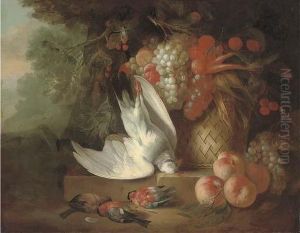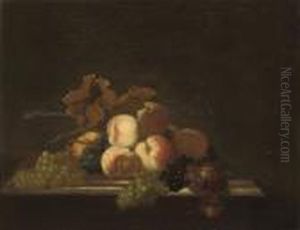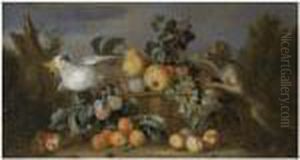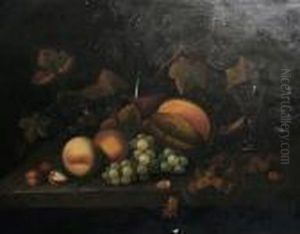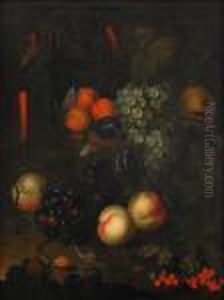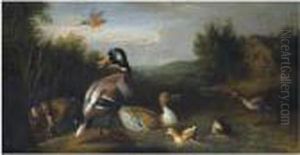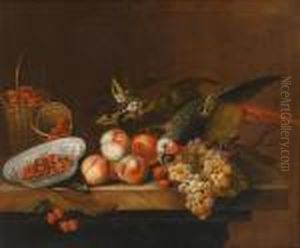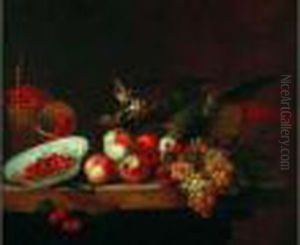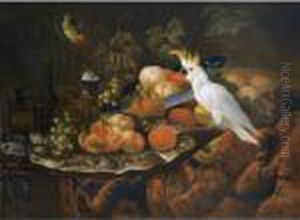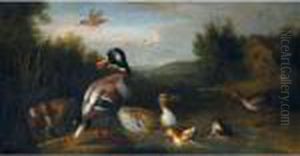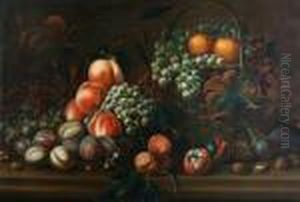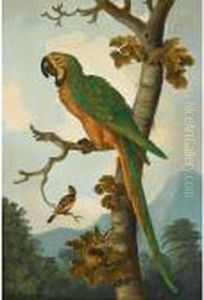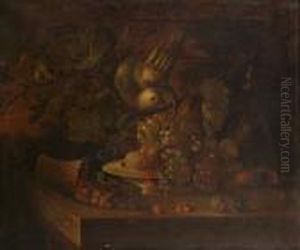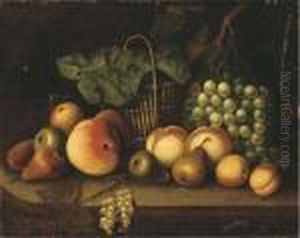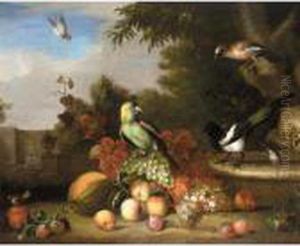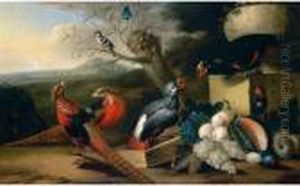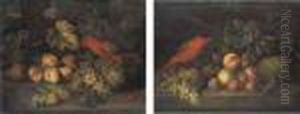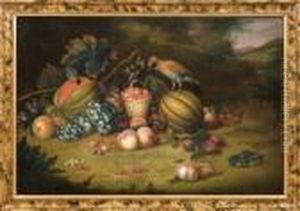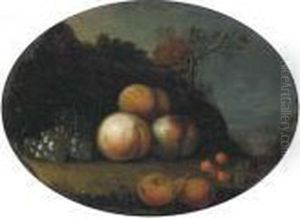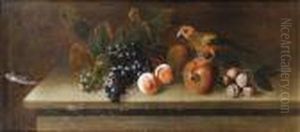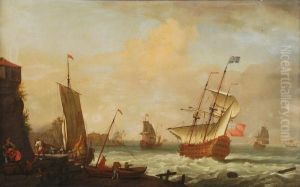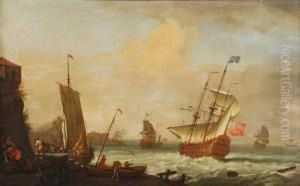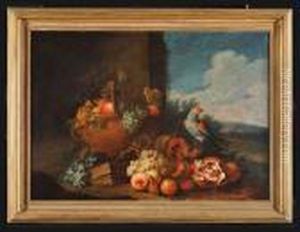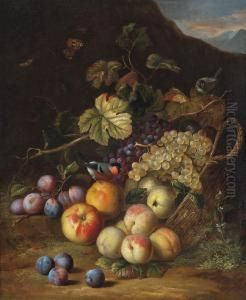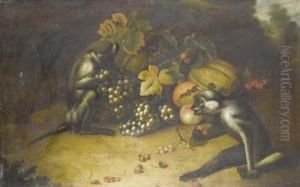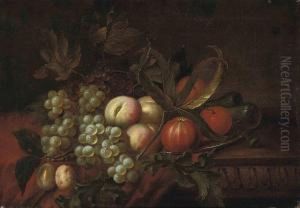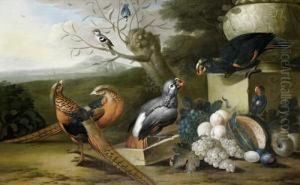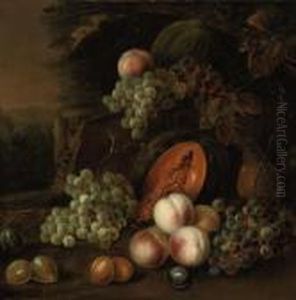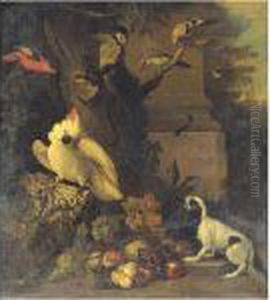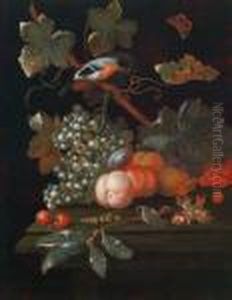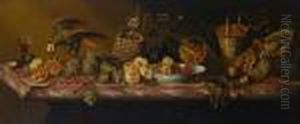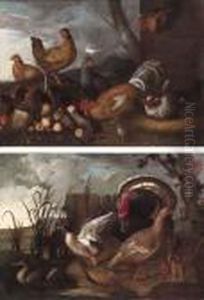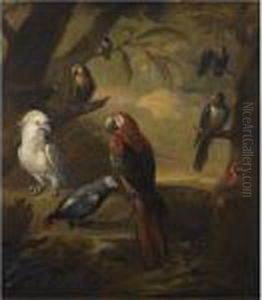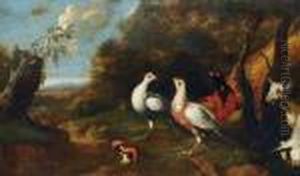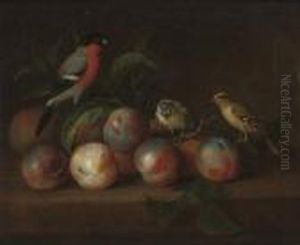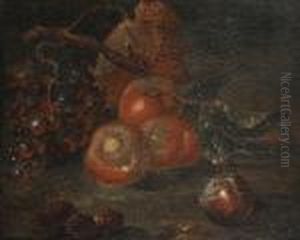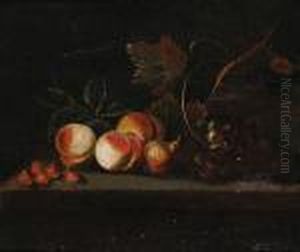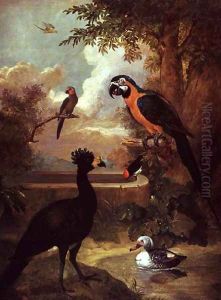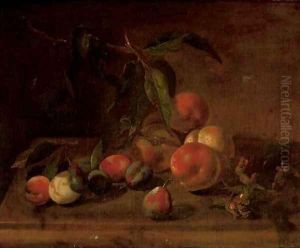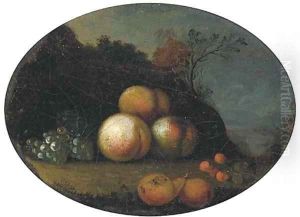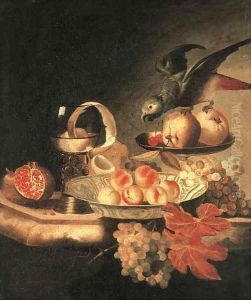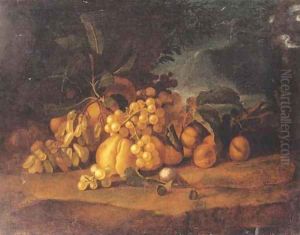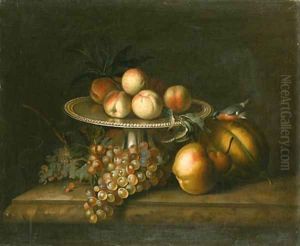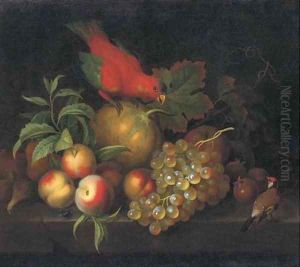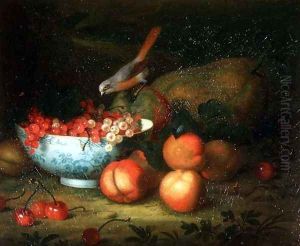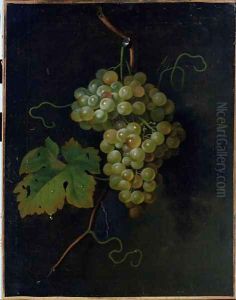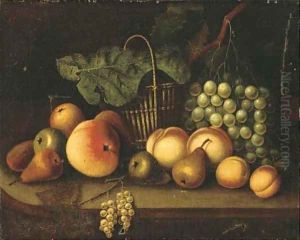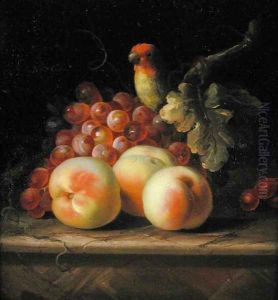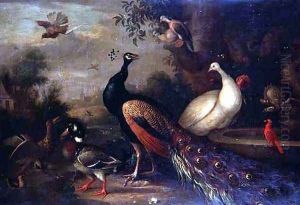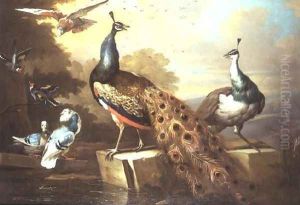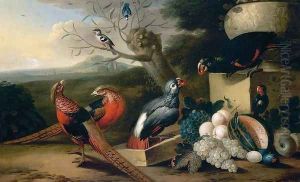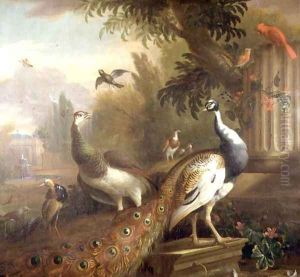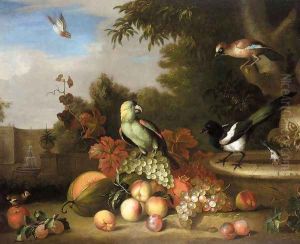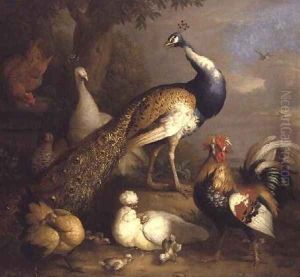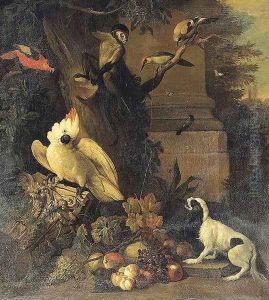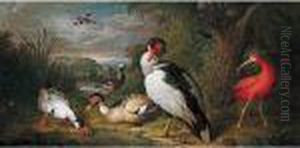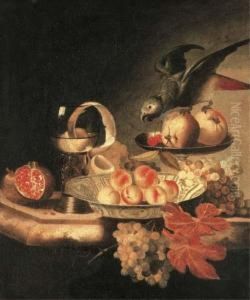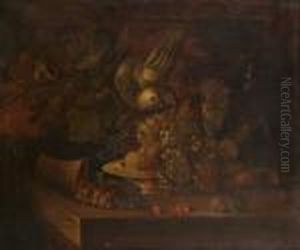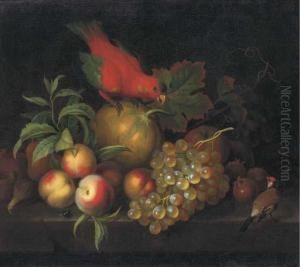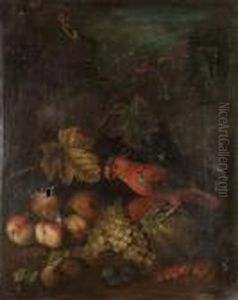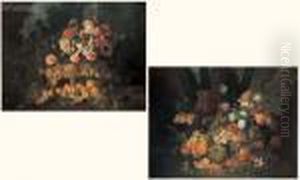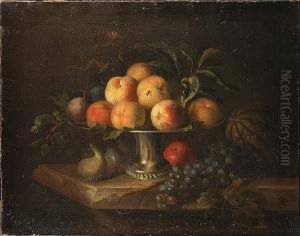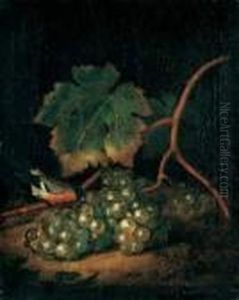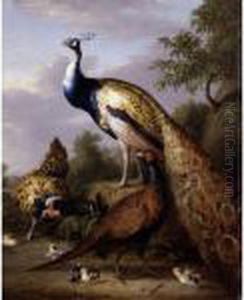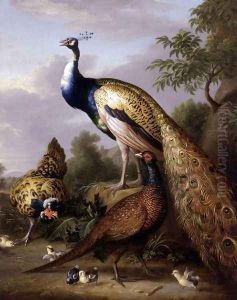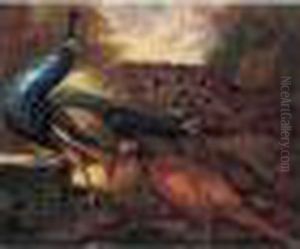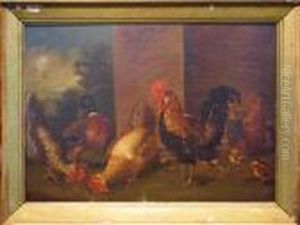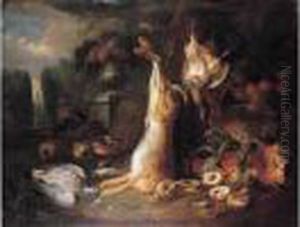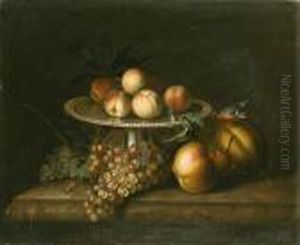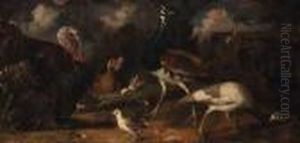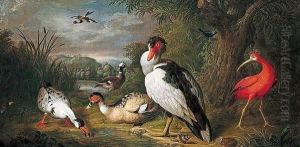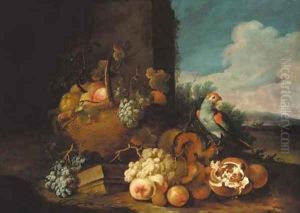Tobias Stranover Paintings
Tobias Stranover or Tobiasz Stranower was a Romanian-born painter who is primarily known for his work in England. Born in Sibiu (Hermannstadt), Transylvania, which was then part of the Habsburg Monarchy, Stranover was exposed to art at an early age, likely influenced by the rich cultural environment of his hometown. His early training is not well documented, but he is believed to have initially learned painting in his native land before he ventured elsewhere in Europe to further his skills.
Stranover left his homeland to study under the eminent Dutch still life painter Jakob Bogdani, who was also known as Jacob Bogdány. In the late 17th or early 18th century, Stranover moved to England, where Bogdani had established a successful career. Under Bogdani's guidance, Stranover honed his abilities, particularly in the realm of still life and exotic bird paintings. His works often depicted lush arrangements of fruit and flowers, sometimes accompanied by birds, all rendered with meticulous detail and vibrant colors that were characteristic of the Baroque period.
In England, Stranover found a receptive audience for his work among the aristocracy and the burgeoning middle class. His paintings were well-suited to the tastes of collectors who desired opulent artworks for their estates. Stranover's ability to imbue his compositions with a sense of luxury and his skill at portraying textures and surfaces, such as feathers and foliage, gained him a measure of fame.
Around 1720, Stranover married Bogdani's daughter, Elizabeth. The union further cemented his ties to his mentor and the English art world. Although Stranover's works were often compared to those of his father-in-law, he developed his own style, and his paintings are distinguishable by their own merits.
Throughout his career in England, Stranover continued to produce a significant body of work. He exhibited his paintings and sold them to patrons, but unlike many of his contemporaries, he did not seek membership in the professional societies or academies that were emerging at the time. Instead, he preferred to operate independently, which did not seem to hinder his success.
Stranover's legacy as an artist is marked by his unique contributions to the still life genre and his adaptation of continental European styles to the British artistic landscape. His works can be found in various collections and museums, and they continue to be appreciated for their beauty and historical significance. Tobias Stranover died in 1756, leaving behind a collection of works that reflect a rich blend of cultural influences from his Transylvanian roots to the flourishing art scene of Baroque England.
